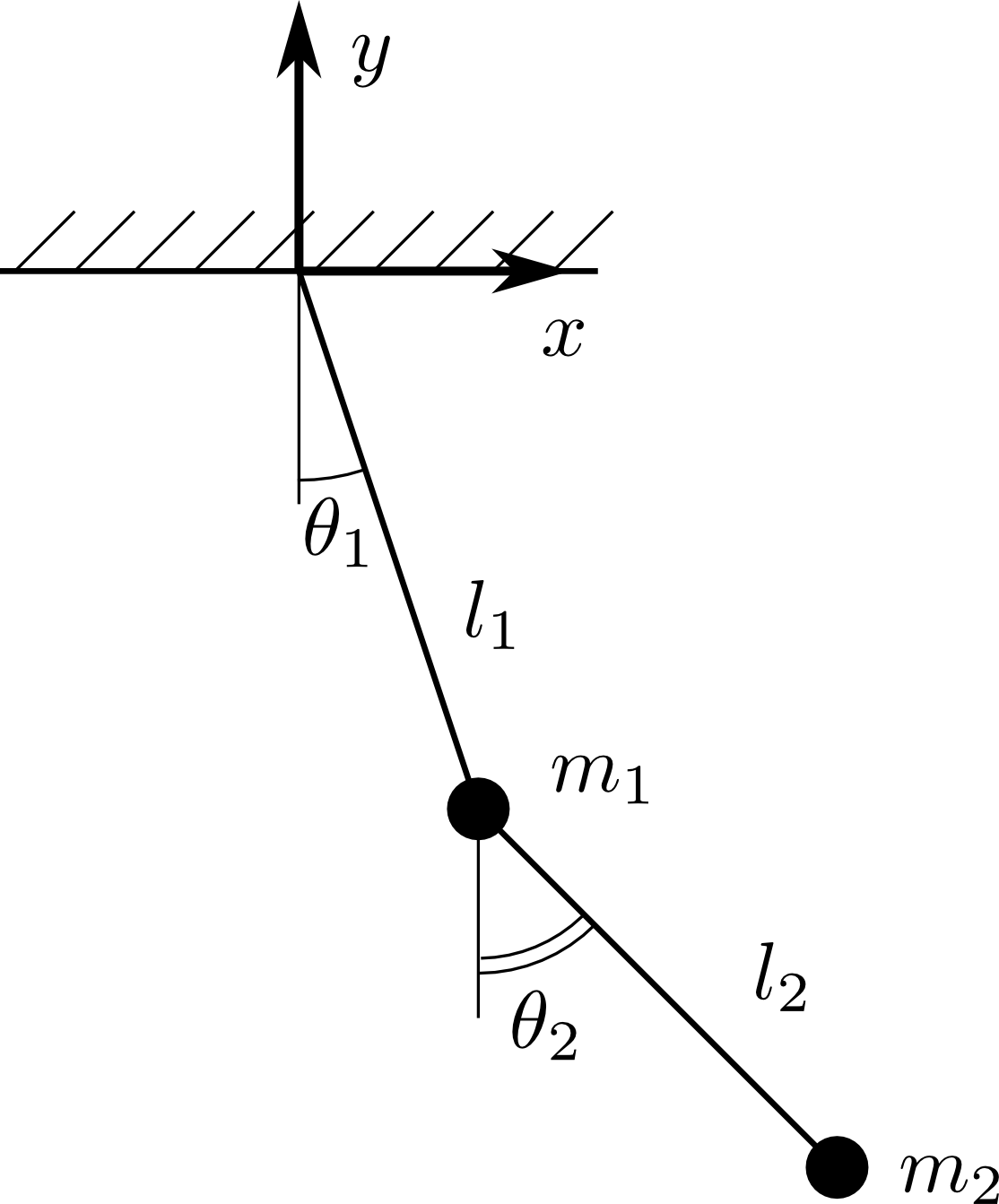UPD There was an error concerning the place of $\frac{1}{2}$. fixed it.
First of all, now I see that this question fits better to physics.SE. I thought the answer will be well known, standard and taken for granted, but it seems it's not the case.
For a classical system I believe I have found how does classical 3D space metrics defines the form of kinetic energy. So what I have understood by now.
The configuration space $Q$ of a single particle permits a metrics on it as
$$g = m g_{E}$$
where $m$ is particle's mass and $g_{E}$ is the Euclidean metric tensor. Then the kinetic part of Hamiltonian is given by
$$T = \frac{1}{2} g^{-1}$$
whereas the kinetic part of Lagrangian is
$$T = \frac{1}{2} g$$
See my question at MSE on how the inverse metrics is connected to the Legendre transform of quadratic forms.
The configuration space of N-particle system is given by
$$Q = Q_1 \times Q_2 \times \ldots \times Q_N$$
where $Q_i$ is the configuration space of $i$-th particle. Since $Q_i$ are all Riemannien manifolds, then $Q$ itself has a natural structure of a Riemannien manifold, see my corresponding question at Math.SE. This new metrics agrees with the view of kinetic energy of the system as a sum of kinetic energies of it's subsystems. The metric tensor on $Q$ defines the kinetic energy
As for the relativistic case things are harder.
To see how the formalism works I studied double pendulum as a practical example.

Let $Q_1$ and $Q_2$ be first defined in Cartesian system $(x_1, y_1)$, $(x_2, y_2)$. Euclidean metric in both of them $g_E$ is given as
$$g_E = dx \otimes dx + dy \otimes dy $$
Let's do the variable substitution:
$$
\begin{cases}
x_1 = l_1 \sin \theta_1, \\
y_1 = - l_1 \cos \theta_1, \\
\end{cases}
$$
$$
\begin{cases}
x_2 = l_1 \sin \theta_1 + l_2 \sin \theta_2, \\
y_2 = - l_1 \cos \theta_1 - l_2 \cos \theta_2, \\
\end{cases}
$$
In new coordinates $g_1$ for $Q_1$ and $g_2$ for $Q_2$ are:
$$g_1 = m_1 l_1^2 \, d \theta_1 \otimes d \theta_1$$
$$
\begin{multline}
g_2 = m_2 \left[ l_1^2 \, d \theta_1 \otimes d \theta_1 + l_2^2 \, d \theta_2 \otimes d \theta_2 + \right .\\
\left. l_1 l_2 \left(\cos(\theta_1 - \theta_2)\right)(d \theta_1 \otimes d \theta_2 + d \theta_2 \otimes d \theta_1) \right]
\end{multline}
$$
To obtain the form of kinetic energy in the Lagrangian setting:
$$
\begin{multline}
T(\dot \theta_1, \dot \theta_2) = \frac{1}{2} g\left( \dot \theta_1 \frac{\partial}{\partial \theta_1} + \dot \theta_2 \frac{\partial}{\partial \theta_2}, \dot \theta_1 \frac{\partial}{\partial \theta_1} + \dot \theta_2 \frac{\partial}{\partial \theta_2} \right) = \frac{1}{2} (g_1 +g_2) = \\
\frac{1}{2} m_1 l_1^2 \dot \theta_1 \dot \theta_1 + \frac{1}{2} m_2 \left[ l_1^2 \dot \theta_1^2 + l_2^2 \dot \theta_1^2 + 2 l_1 l_2 \left(\cos(\theta_1 - \theta_2)\right) \dot \theta_1 \dot \theta_2 \right]
\end{multline}
$$
Up to this point all the calculations were conducted by pure algebraical tossing of symbols that I did by hand. No drawings or whatsoever, actually that was the goal --- given the metrics do everything further as a machine, blindly. Unfortunately I don't know yet the easy way to cast kinetic energy in Hamiltonian form. One can do a Legendre transform or, as I did resort to CAS to find the inverse matrix:
$$
\begin{multline}
T(p_{\theta_1}, p_{\theta_2}) = \\
\frac{1}{2}
\begin{bmatrix}
p_{\theta_1} & p_{\theta_2}
\end{bmatrix}
\begin{bmatrix}
(m_1 + m_2) l_1^2 && m_2 l_1 l_2 \left(\cos(\theta_1 - \theta_2)\right) \\
m_2 l_1 l_2 \left(\cos(\theta_1 - \theta_2)\right) && m_2 l_2^2
\end{bmatrix}^{-1}
\begin{bmatrix}
p_{\theta_1} \\
p_{\theta_2}
\end{bmatrix} = \\
= \frac{
\left(m_2 + m_1 \right) l_1^2 p_{\theta_2}^2 +
l_2 ^ 2 m_2 p_{\theta_1}^2 -
2 m_2 l_1 l_2 p_{\theta_1} p_{\theta_2} \cos \left(\theta_2 - \theta_1\right)
}{
2\left(
l_1^2 l_2^2 m_2^2 + l_1^2 l_2^2 m_1 m_2 -
l_1^2 l_2^2 m_2^2 \cos \left(\theta_2 - \theta_1 \right)^2
\right)
}
\end{multline}
$$

